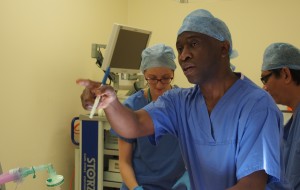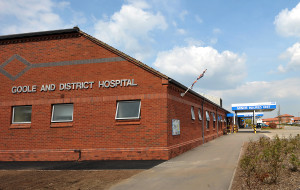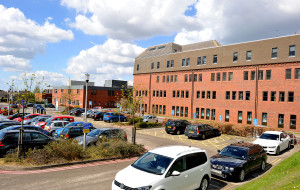Mole removal
Moles are small coloured spots on the skin made up of cells called melanocytes, which produce the colour (pigment) in your skin.
The scientific name for moles is melanocytic naevi.
Moles are often a brownish colour, although some may be darker or skin-coloured. They can be flat or raised, smooth or rough, and some have hair growing from them. Moles are usually circular or oval with a smooth edge.
Moles can change in number and appearance. Some fade away over time, often without you realising. They also sometimes respond to hormonal changes, for example during:
-
- Pregnancy – when they may get slightly darker
- Teenage years – when they increase in number
- Older age – when they may disappear from 40 to 50 years of age onwards
- Some moles are present at birth: most come up later. Most people have at least one acquired mole: many have several. Some come up in early childhood, and others come up later, particularly during adolescence and pregnancy.
There are three main reasons for removing moles:
1. The most important reason is doubt about the diagnosis. The mole then has to be checked under the microscope. The main worry is usually whether or not the mole is really a melanoma. The changes that suggest this include changes in size (getting bigger), shape (becoming asymmetrical with an irregular ragged edge) or colour (an uneven colour with different shades of black brown or pink). Suggestive symptoms include itching and a tendency to bleed, ooze or crust up. A good general rule is that small hairy moles seldom turn into melanomas.
2. The mole has become a nuisance by catching on clothing or being cut while shaving.
3. Cosmetic reasons.
What happens during the operation
If there is any doubt about the diagnosis, the mole should be cut out completely under a local anaesthetic, which means that the affected skin area will be completely numb but you stay awake. Other techniques can be used for moles being removed because they look ugly or have become a nuisance. These include shaving the mole off flush with the skin (shave excision). Most moles are removed with a scalpel and the wound closed with stitches.
This procedure will usually leave a scar – how big and noticeable this will be depends upon the exact operation. Most scars fade significantly over the first year.
To enquire about our services or to make an appointment call us on (03033) 302956 or make an online enquiry
Who will perform this procedure?

Mr Augustine Akali
Consultant plastic surgeon offering plastic, cosmetic and reconstructive surgery.

Dr Butt
Consultant dermatologist at Scunthorpe hospital.
Where can I have this procedure performed?

Goole and District Hospital
Goole hospital is where all of our cosmetic procedures are carried out, although you can choose to have your clinic consultations at Scunthorpe or Grimsby hospitals if this is more convenient.

Scunthorpe General Hospital
A wide range or medical, surgical and diagnostic procedures are available at Scunthorpe hospital. You can also have your clinic consultation for cosmetic procedures here.

Diana, Princess of Wales Hospital
A wide range of medical, surgical and diagnostic procedures are available at the hospital which is based in Grimsby. You can also have your clinic consultation for cosmetic procedures here.
How much does it cost?
| Mole removal (without histology) | From £360 |
Quality of care
From the moment we receive your request for a consultation through to the completion of your treatment we offer the highest standards of care.
Affordability
We offer a high quality service at competitive prices. As we work out of NHS hospitals we are able to offer procedures that are more affordable than our competitors
FAQ
From 'what's included in the price' to 'how to pay' see some of the questions asked by our patients and the answers.